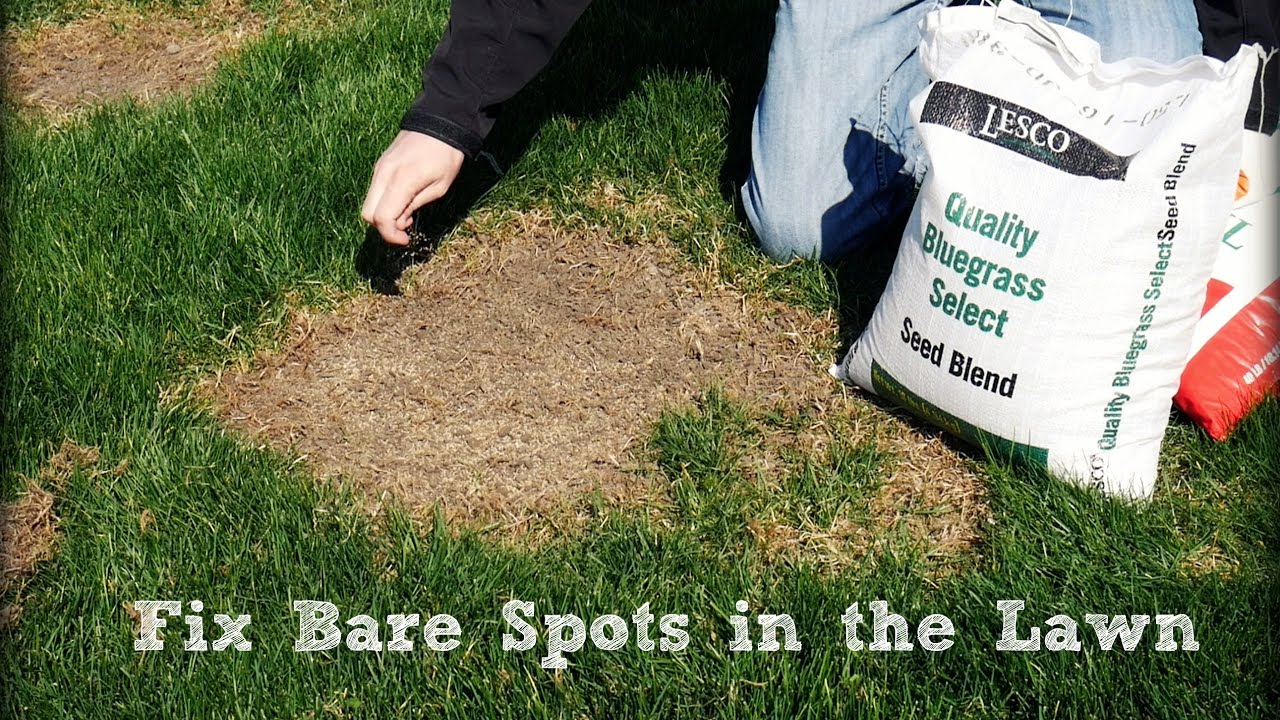To reseed a dead lawn, first, remove any dead grass and debris, then prepare the soil by loosening it with a rake. Spread a layer of compost or topsoil over the area, then sprinkle grass seeds evenly.
Finally, water the area regularly to ensure germination and growth.
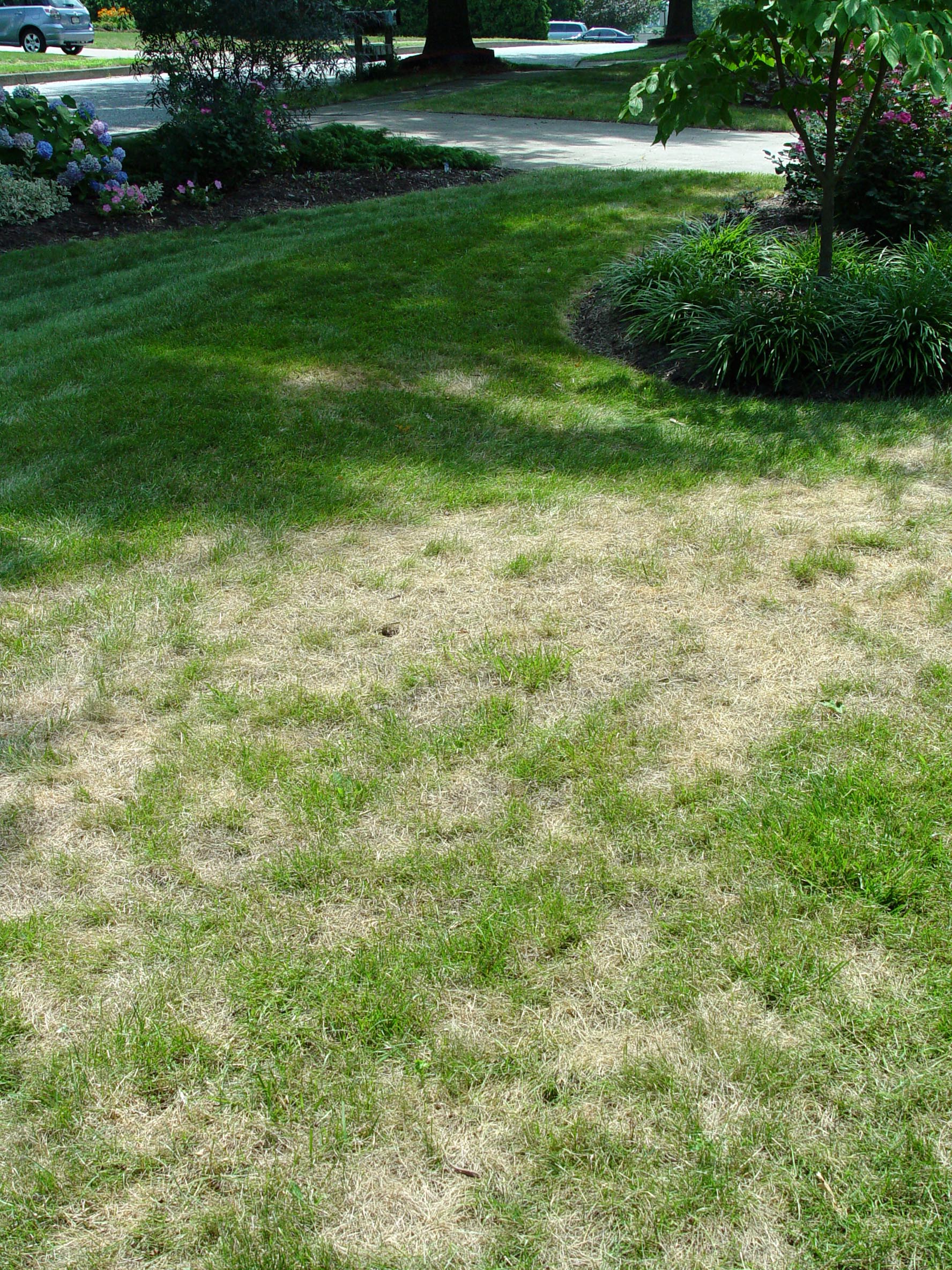
Credit: georgeweigel.net
Understanding The Importance Of Reseeding
The Impact Of A Dead Lawn On Your Property’S Appearance And Value
A dead lawn can significantly detract from the overall appearance and value of your property. When visitors or potential buyers approach your home, the first thing they notice is your lawn. A dead, patchy lawn gives off an unkempt and neglectful impression, which can be a major turn-off.
It can make your property appear less inviting and appealing, affecting its curb appeal and reducing its market value. Here are the key points to consider:
- Aesthetics: A lush, green lawn adds beauty to any property, creating a welcoming and well-maintained atmosphere. A dead lawn, on the other hand, gives the impression of neglect and can make even a well-maintained home look unattractive.
- Perception: Potential buyers or guests may assume that a dead lawn reflects a lack of care and maintenance throughout the property. It can raise concerns about other aspects, such as the condition of the house or the level of upkeep.
- Property Value: A dead lawn can lower the perceived value of your property. When buyers compare your home to others in the area with healthy lawns, they may be willing to pay more for a property that appears well-maintained and has an appealing exterior.
The Benefits Of Reseeding Your Lawn
Reseeding your lawn offers numerous benefits that go beyond just enhancing its appearance. By introducing new grass seeds, you can revive your lawn and improve its overall health. Here are the key points to consider:

- Improved Grass Density: Reseeding fills in bare patches and thin areas, ensuring a denser and more uniform lawn. This not only improves the visual appeal but also prevents weed growth and reduces soil erosion.
- Enhanced Health and Resilience: Reseeding with high-quality grass varieties helps fortify your lawn against diseases, pests, and harsh environmental conditions. It promotes stronger root growth and makes the grass more resistant to stress factors.
The Role Of Reseeding In Lawn Maintenance And Revitalization
Reseeding is an essential component of lawn maintenance and revitalization. It helps to rejuvenate your lawn by promoting new growth and restoring its overall health. Here are the key points to consider:
- Repairing Damage: Reseeding is an effective way to repair damaged areas such as bare spots, dry patches, or areas affected by disease or insect activity. By strategically reseeding, you can fill in these areas and restore the visual appeal of your lawn.
- Preventing Weed Infestation: Reseeding helps in preventing weed infestation by creating a dense turf that leaves little room for weeds to establish. By filling in gaps and promoting healthy grass growth, reseeding acts as a natural weed deterrent.
- Long-term Lawn Care: Regular reseeding ensures that your lawn stays healthy and vibrant. It replenishes old or weak grass with new, vigorous growth, prolonging the lifespan of your lawn and reducing the need for extensive repairs in the future.
Remember, maintaining a beautiful and healthy lawn requires consistent effort and the occasional reseeding to keep it lush and vibrant. By understanding the importance of reseeding, you can take proactive steps to ensure a stunning lawn that adds value to your property.
Assessing The Condition Of Your Lawn
Identifying Signs Of A Dead Lawn
If your once lush and vibrant lawn has started to look less than stellar, it could be a sign that it’s dead or dying. Here are some key signs to look out for:
- Patchy or Sparse Grass Growth: Dead lawns often have areas where the grass is patchy or sparse, leaving bare soil exposed.
- Brown or Yellow Discoloration: A dead lawn will typically have large sections of brown or yellow grass instead of the vibrant green color you desire.
- Lack of New Grass Growth: If you’ve noticed that no new grass is sprouting in areas where it should be, it could be an indication that your lawn is dead rather than dormant.
- Thinning or Weak Grass Blades: Dead lawns will have grass blades that are thin and weak, making them more susceptible to damage and disease.
Examining The Causes Of Lawn Death
Before you can take steps to reseed your dead lawn, it’s important to understand what could have caused its demise. Here are some common causes of lawn death:
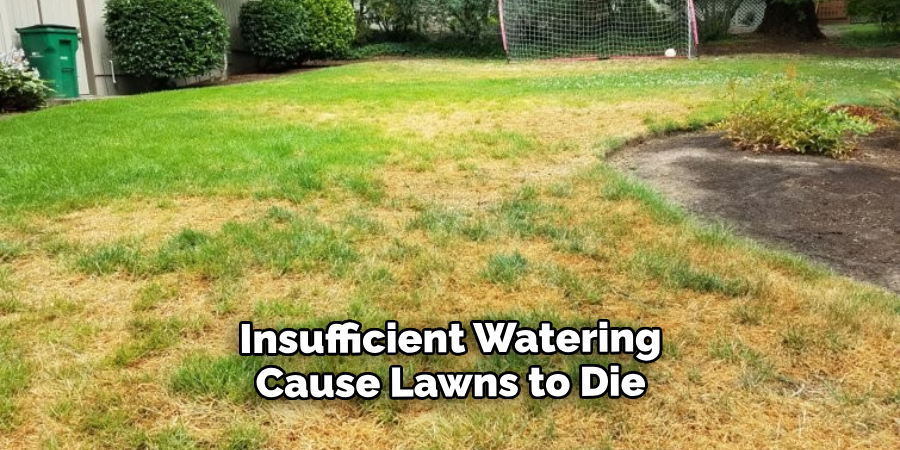
- Lack of Water: Insufficient watering can cause lawns to die, especially during hot and dry periods.
- Overwatering: On the flip side, overwatering can also lead to lawn death by promoting the growth of fungi and diseases.
- Soil Compaction: Compacted soil can prevent grass roots from accessing essential nutrients and water, eventually causing the lawn to die.
- Poor Soil Quality: If the soil lacks essential nutrients or has a high acidity level, it can inhibit grass growth and ultimately lead to a dead lawn.
- Incorrect Mowing Practices: Mowing the grass too short or too frequently can weaken it, making it more susceptible to stress and disease.
Determining If Reseeding Is The Right Solution
Once you’ve identified the signs of a dead lawn and examined the possible causes, it’s time to assess whether reseeding is the appropriate solution. Consider the following factors:
- Extent of the Damage: If only a small portion of your lawn is dead, you may be able to spot-treat and revive it without the need for reseeding. However, if a significant portion is dead, reseeding may be necessary.
- Time of Year: Reseeding is most successful during the early fall or spring when temperatures are moderate, and moisture levels are favorable for grass growth.
- Budget and Availability: Reseeding can require some investment in terms of purchasing quality grass seed and necessary tools. Additionally, ensure that you have the time and resources to care for the newly seeded area properly.
- Personal Preferences: Consider whether you have any particular preferences regarding the type of grass or the overall appearance of your lawn. Reseeding offers an opportunity to choose a specific grass variety that suits your needs.
By assessing the condition of your lawn, identifying signs of a dead lawn, examining the causes of lawn death, and considering the suitability of reseeding, you can make an informed decision about how to revive your lawn and bring it back to life.
Preparing For Reseeding
Clearing The Area Of Debris, Weeds, And Dead Grass
Before you can reseed a dead lawn, it is essential to prepare the area properly. This involves clearing the area of debris, weeds, and dead grass. Here are the key points to consider:
- Remove any large debris, such as rocks, branches, or fallen twigs, from the lawn area. This will provide a clean slate for reseeding.
- Use a rake or a dethatching tool to remove the layer of dead grass and thatch from the lawn. Thatch accumulation can prevent the new grass seeds from making proper contact with the soil.
- Inspect the lawn for unwanted weeds and remove them either manually or by using an appropriate weed killer. Ensure that you carefully follow the instructions on the weed killer packaging to avoid damaging the soil or new grass seedlings.
By clearing the area of debris, weeds, and dead grass, you will create an ideal environment for reseeding and maximize the chances of a successful lawn rejuvenation.
Soil Testing And Analysis To Determine Nutrient Deficiencies
After clearing the area, it’s crucial to assess the soil to ensure optimal conditions for reseeding. Here’s what you need to know:
- Conduct a soil test to determine the ph level and nutrient deficiencies in the soil. Soil testing kits are available at most garden centers or can be sent to a laboratory for professional analysis. This will help you identify any nutrient imbalances and allow you to make appropriate amendments.
- Follow the instructions provided with the soil testing kit to obtain accurate results. Typically, this involves collecting multiple soil samples from different areas of the lawn and mixing them together for a representative analysis.
- Once you receive the soil test results, pay close attention to any nutrient deficiencies identified. The report will provide recommendations on the amount and type of fertilizer or soil amendments required to improve the soil’s condition.
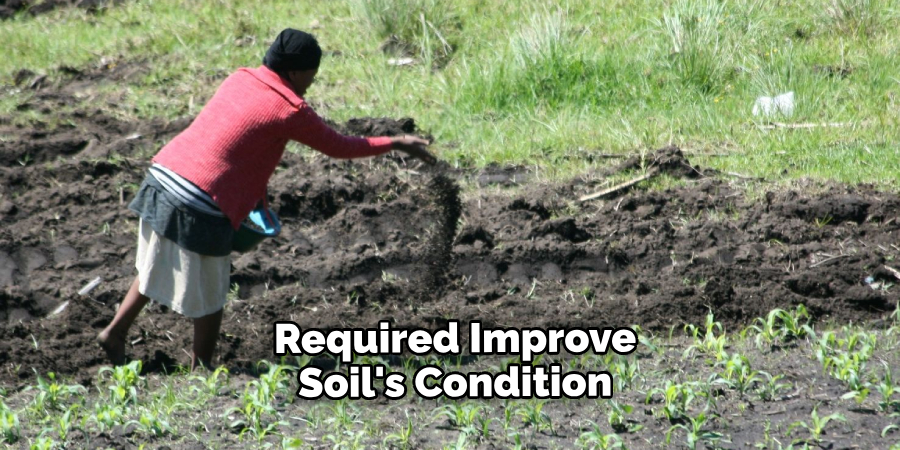
By analyzing the soil and addressing any nutrient deficiencies, you can ensure that the reseeded lawn has the necessary nutrients to thrive and grow.
Selecting The Appropriate Grass Seed For Your Climate And Soil Type
Choosing the right grass seed is crucial for the success of your reseeding efforts. Here’s what you should consider:
- Research the grass varieties that are suitable for your specific climate and soil type. Different grass species have varying requirements for sunlight, water, and soil conditions.
- Consider factors such as the amount of shade or sunlight your lawn receives, the average annual rainfall in your area, and the soil’s drainage capacity.
- Consult with local experts or nurseries for recommendations on which grass seed varieties are best suited for your region.
- Select a high-quality grass seed that is free from weeds, unwanted grass varieties, and impurities. Look for seeds labeled as “certified” or “weed-free” to ensure better results.
By choosing the appropriate grass seed for your climate and soil type, you will increase the chances of establishing a healthy, vibrant lawn that can withstand the specific conditions of your area.
Remember, proper preparation is key to successfully reseeding a dead lawn. Take the time to clear the area of debris, weeds, and dead grass, analyze the soil for nutrient deficiencies, and select the right grass seed. This thorough approach will help to ensure a flourishing and rejuvenated lawn.
Proper Timing And Techniques For Reseeding
Choosing The Optimal Time Of Year For Reseeding
Reseeding a dead lawn can bring it back to life and give it a fresh, vibrant look. However, timing is crucial when it comes to reseeding, as the success of your efforts largely depends on the season. Here are the key points to consider when choosing the optimal time to reseed your lawn:
- Spring or Fall: Spring and fall are the two best seasons for reseeding your lawn. The mild temperatures and increased moisture during these seasons provide ideal conditions for seed germination and establishment.
- Timing in Spring: For spring reseeding, aim for a time frame when the soil temperature is consistently above 50°f (10°c). This can vary depending on your geographical location, so check with your local extension office for precise timing.
- Timing in Fall: Fall reseeding should be done at least six to eight weeks before the first expected frost. This allows enough time for the new grass to establish itself before winter arrives.
- Avoiding Extreme Temperatures: Avoid reseeding during the peak summer months or during freezing winter temperatures. Extreme heat can stress the young grass, while freezing temperatures can hinder germination.
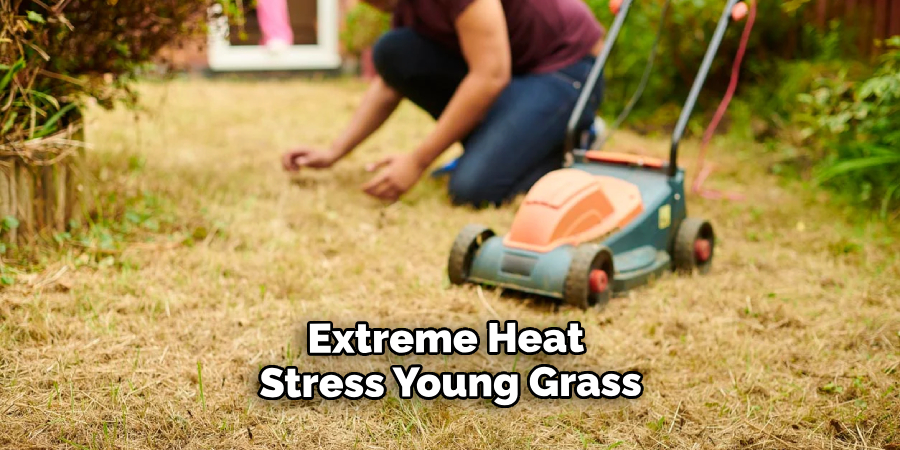
How To Prepare The Soil For Successful Germination
The success of reseeding a dead lawn greatly depends on preparing the soil properly. Here are the key steps to prepare your soil for successful germination:
- Clear the Area: Remove any debris, dead grass, or weeds from the area where you plan to reseed. This will provide a clean and optimal environment for the new grass to grow.
- Test the Soil: Conduct a soil test to assess its ph level and nutrient content. This will help you determine if any amendments, such as lime or fertilizer, are needed to improve soil fertility.
- Loosen the Soil: Use a rake or a garden tiller to loosen the top layer of soil. This will break up any compacted areas and create a crumbly texture, which promotes good seed-to-soil contact.
- Level the Ground: Smooth out any uneven areas with a rake or a leveling tool. This will ensure an even distribution of the seed and prevent water from pooling.
Broadcasting And Overseeding Techniques To Ensure Even Coverage
Proper broadcasting and overseeding techniques are essential to achieve even coverage and promote a thick, healthy lawn. Here are the key points to keep in mind:
- Select the Right Seed: Choose a high-quality grass seed that is suitable for your specific lawn type and climate conditions. Consider factors such as shade tolerance, drought resistance, and foot traffic when making your selection.
- Calculate the Seed Quantity: Follow the recommended seeding rate provided by the seed manufacturer. This will help you determine the appropriate amount of seed to apply for even coverage.
- Use a Spreader: A broadcast spreader is a useful tool for even seed distribution. Calibrate the spreader according to the seed rate and walk at a steady pace to ensure uniform coverage.
- Overseed Bare Patches: Pay special attention to bare or thin areas of your lawn. Overseeding these areas will promote denser growth and help fill in any gaps.
- Water Thoroughly: After seeding, water the area gently but thoroughly. Keep the soil consistently moist until the new grass reaches a height of around 2 inches (5 cm). Avoid overwatering, as it can lead to fungal diseases.
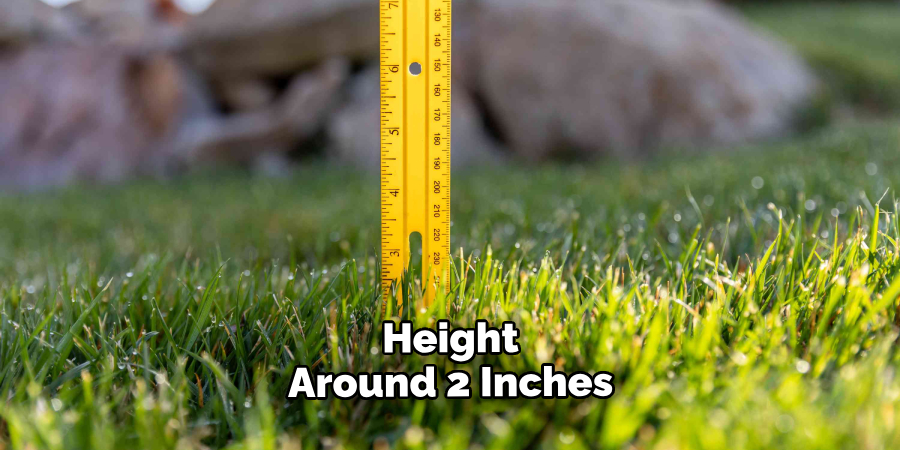
Reseeding a dead lawn requires proper timing, soil preparation, and broadcast techniques. By following these guidelines, you can give your lawn a fresh start and enjoy a revitalized green space in no time.
Caring For Newly Reseeded Lawn
After successfully reseeding your dead lawn, it’s important to properly care for the newly established grass to ensure its healthy growth and long-term robustness. Following correct watering techniques, maintaining the proper mowing height and frequency, and addressing common challenges such as weed invasion and pest control will help your newly reseeded lawn flourish.
Correct Watering Techniques To Promote Growth And Establishment
To promote the growth and establishment of your newly reseeded lawn, it’s crucial to follow correct watering techniques. Here’s what you need to know:
- Water the Lawn Lightly but Frequently: It’s important to keep the seeded area consistently moist without overwatering. Water lightly to avoid washing away the seeds and water frequently to prevent drying out.
- Water in the Morning: Watering in the morning allows the grass to dry out throughout the day, reducing the risk of fungal diseases.
- Avoid Watering at Night: Watering at night can leave the grass blades wet for an extended period, providing a favorable environment for diseases.
- Use a Sprinkler or Irrigation System: If possible, use a sprinkler or irrigation system to ensure even water distribution. This will help the newly reseeded lawn grow uniformly.
Maintaining Proper Mowing Height And Frequency
Proper mowing practices are essential for the health and vitality of your reseeded lawn. Consider the following tips:
- Wait for the Grass to Reach the Ideal Height: Allow the grass to reach a height of 3 to 4 inches before mowing. This ensures that the roots have established well before any cutting takes place.
- Don’t Remove More than One-third of the Grass Height: Avoid cutting the grass too short as it can stress the plants. Follow the “one-third rule” and never remove more than one-third of the grass height in a single mowing.
- Keep the Mower Blade Sharp: A dull blade can tear the grass instead of making clean cuts. Regularly sharpen the mower blade to ensure a neat and healthy lawn.
- Mow at the Right Frequency: As the reseeded lawn grows, adjust the mowing frequency to maintain the recommended grass height. Depending on the grass type, this is typically every 7 to 10 days.
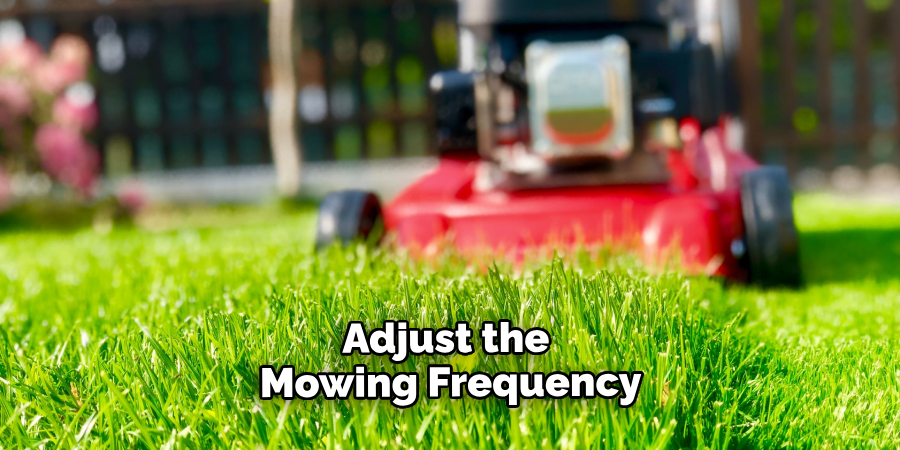
Addressing Common Challenges, Such As Weed Invasion And Pest Control
Once your newly reseeded lawn starts to grow, you may face challenges such as weed invasion and pest control. Here’s what you can do to tackle these issues:
- Weed Prevention: Apply a pre-emergent herbicide to prevent weeds from taking over your lawn. Follow the instructions carefully and apply at the correct time for best results.
- Weed Removal: If weeds still manage to appear, manually remove them or spot-treat with a post-emergent herbicide. Be cautious when using herbicides and follow the manufacturer’s guidelines.
- Pest Identification and Control: Monitor your lawn for signs of pests such as insects or diseases. Identify the specific pest causing damage and use appropriate control methods. This may include applying insecticides or organic pest control methods.
- Regular Maintenance: Proper mowing, watering, and fertilization practices contribute to a healthy lawn, reducing the likelihood of weed invasion and pest problems.
Remember, caring for a newly reseeded lawn requires patience and diligence. By following the correct watering techniques, maintaining the proper mowing height and frequency, and addressing common challenges, you’ll set the stage for a lush and vibrant lawn. Enjoy the fruits of your labor and the beauty of a rejuvenated yard!
Long-Term Lawn Maintenance
Incorporating Regular Fertilization And Aeration Into Your Lawn Care Routine
Maintaining a lush and healthy lawn requires consistent effort and attention to detail. Long-term lawn maintenance involves incorporating regular fertilization and aeration into your lawn care routine. These practices not only support healthy growth but also help prevent the occurrence of dead patches and promote a thriving lawn.
Here are some key points to consider when it comes to incorporating regular fertilization and aeration into your lawn care routine:
- Fertilization plays a crucial role in providing essential nutrients to your lawn. It replenishes the soil with the necessary minerals and elements that promote healthy growth and vibrant greenery.
- Ensure you choose a high-quality fertilizer suitable for your specific lawn type and the needs of your soil. Different fertilizers offer various nutrient compositions to address specific deficiencies and boost overall health.
- Follow the recommended application instructions when fertilizing your lawn. Consider factors such as the season, grass type, and weather conditions to determine the ideal frequency and timing of fertilization.
- Aeration is another vital aspect of long-term lawn maintenance. It involves creating small holes or plugs in the soil to enhance air circulation, water absorption, and root development.
- Aeration helps reduce soil compaction, which can impede the flow of nutrients, water, and oxygen to the roots. By loosening the soil, aeration promotes healthy root growth and enhances the overall health and vitality of your lawn.
- Aim to aerate your lawn at least once a year, preferably during the growing season. However, if your lawn experiences heavy foot traffic or compacted soil, you may need to aerate more frequently.
- Consider renting or purchasing a core aerator for the best results. This tool removes small plugs of soil and creates passageways for nutrients and water to reach the roots, ensuring your lawn remains healthy and resilient.
Monitoring For Signs Of Stress Or Disease
To ensure the longevity of your lawn, it’s important to actively monitor for signs of stress or disease. Early detection and prompt action can prevent the spread of issues, preserving the health and appearance of your yard.
Here are some key points to keep in mind when monitoring for signs of stress or disease:
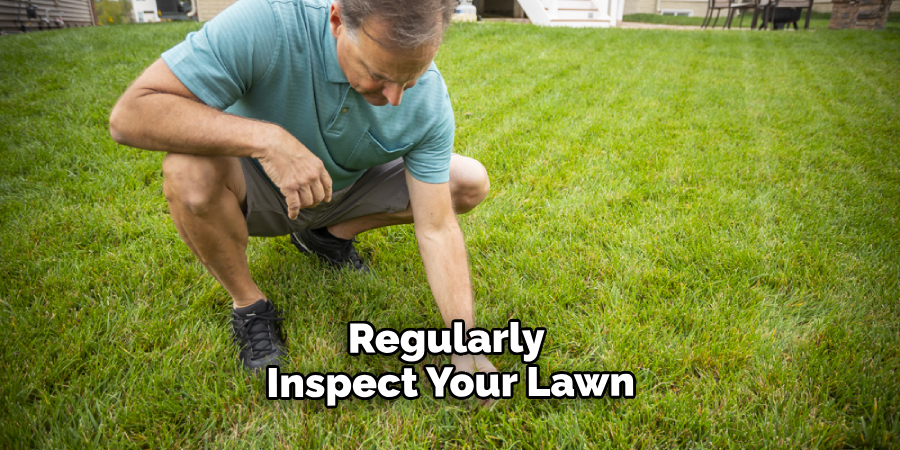
- Regularly inspect your lawn for any visual changes or abnormalities. Look out for signs of discoloration, thinning grass, or the presence of weeds, pests, or disease.
- Pay attention to areas that receive inadequate sunlight, as these spots may be more prone to stress and disease. Consider adjusting landscaping elements or implementing shade-tolerant grass varieties if necessary.
- Water your lawn deeply and infrequently to encourage healthy root growth and reduce the risk of disease. Overwatering can lead to shallow roots, making the grass more susceptible to stress and disease.
- Implement proper mowing practices to maintain an optimal grass height. Avoid cutting the grass too short, as this can weaken the plants and invite pests and diseases into your lawn.
- Familiarize yourself with common lawn diseases and their symptoms to identify and address any issues promptly. Consult with a lawn care professional if you’re uncertain about the nature of a specific problem.
- Actively monitor for signs of pests and take appropriate measures to control infestations. Prompt intervention can help prevent lawn damage and extensive repairs.
Strategies For Promoting Healthy Growth And Preventing Future Lawn Death
While addressing immediate issues is crucial, implementing long-term strategies for promoting healthy growth and preventing future lawn death is equally important. By adopting proactive lawn care practices, you can create an environment that fosters robust, thriving grass.
Here are some strategies to consider for promoting healthy growth and preventing future lawn death:
- Regularly test your soil to identify any nutrient deficiencies or imbalances. This information can guide your fertilization efforts and ensure your grass receives the proper nourishment it needs.
- Overseeding your lawn periodically can help fill in bare patches and maintain a dense, healthy turf. Choose high-quality grass seed that is appropriate for your region and grass type, and follow the recommended seeding guidelines for optimal results.
- Implement proper watering techniques to ensure your lawn’s continued health. Deep, infrequent watering encourages strong root development and resilience to drought. Consider using a rain gauge or moisture meter to monitor soil moisture levels and adjust watering accordingly.
- Establish a regular mowing schedule that promotes optimal growth. Avoid removing more than one-third of the grass blade length at a time and alternate mowing patterns to prevent soil compaction and encourage even growth.
- Maintain a vibrant and weed-free lawn by implementing an effective weed control strategy. This may include manual removal, spot treatments, or using pre-emergent herbicides to prevent weed growth.
- Stay vigilant and address any emerging issues promptly. Regularly inspect your lawn for signs of stress, disease, pests, or weeds, and take swift action to mitigate these problems.
- Stay up-to-date with proper lawn care practices by consulting relevant resources, such as local extension offices or professional lawn care services. Continual education can empower you to make informed decisions and maintain a thriving lawn.
By incorporating consistent fertilization and aeration practices, monitoring for signs of stress or disease, and implementing strategies for healthy growth and prevention, you can enjoy a vibrant, resilient lawn that thrives year-round.
Frequently Asked Questions For How To Reseed Dead Lawn
How Can I Bring My Dead Lawn Back To Life?
To revive your dead lawn, start by removing any dead grass and weeds. Next, aerate the soil to improve water and nutrient absorption. Then, reseed the area with high-quality grass seed and keep it well-watered. Regularly mow and fertilize the reseeded area to promote healthy growth.
What Is The Best Time To Reseed A Dead Lawn?
The best time to reseed a dead lawn is during the late summer or early fall. The soil is still warm, which promotes seed germination, and there is less competition from weeds. However, reseeding can also be done in the spring if necessary.
How Long Does It Take For Reseeded Grass To Grow?
The time it takes for reseeded grass to grow can vary depending on the type of grass, weather conditions, and proper care. Generally, you can expect to see the new grass seedlings emerge within 7-21 days. However, it can take several months for the reseeded area to be fully established and blend in with the rest of the lawn.
Conclusion
Reseeding a dead lawn can be a daunting task, but with the right approach, it is possible to revive your yard’s lush greenery. First, assess the reasons for your lawn’s decline, whether it be improper watering, lack of nutrients, or excessive foot traffic.
Next, prepare the soil by removing any debris and loosening it to allow for proper seed germination. Choosing the right seed for your specific climate and the type of grass you desire is crucial. Ensure proper seed-to-soil contact by raking the seeds into the top layer of soil.
Water your newly seeded lawn regularly, keeping the soil consistently moist without overwatering. Patience is key as germination can take a few weeks. Once the new grass has established, continue proper maintenance, including regular feeding and watering. A beautiful, healthy lawn is within reach.
Invest the time and effort required to reseed your dead lawn, and you’ll be rewarded with a vibrant outdoor space that enhances the overall beauty of your home.

